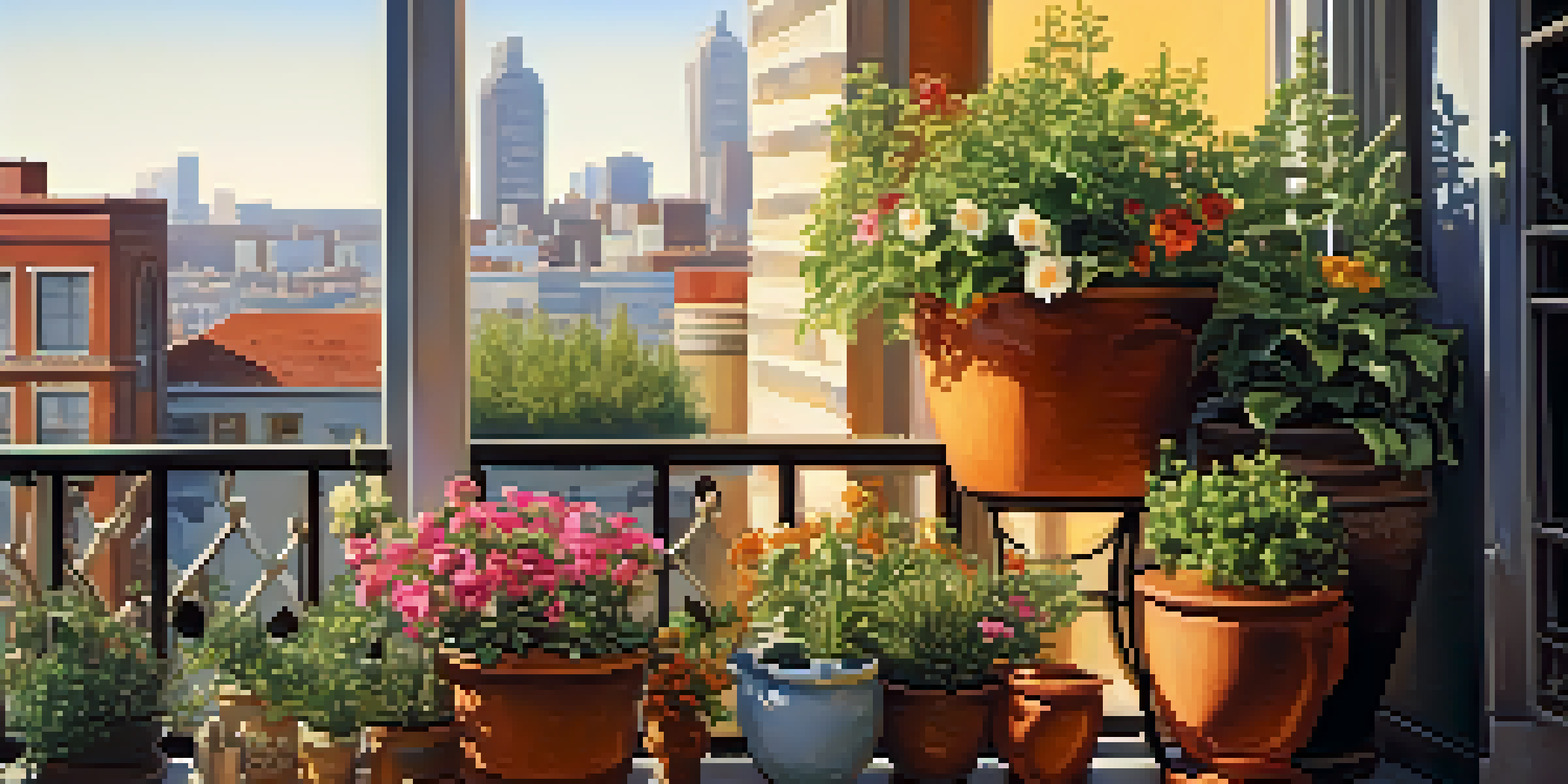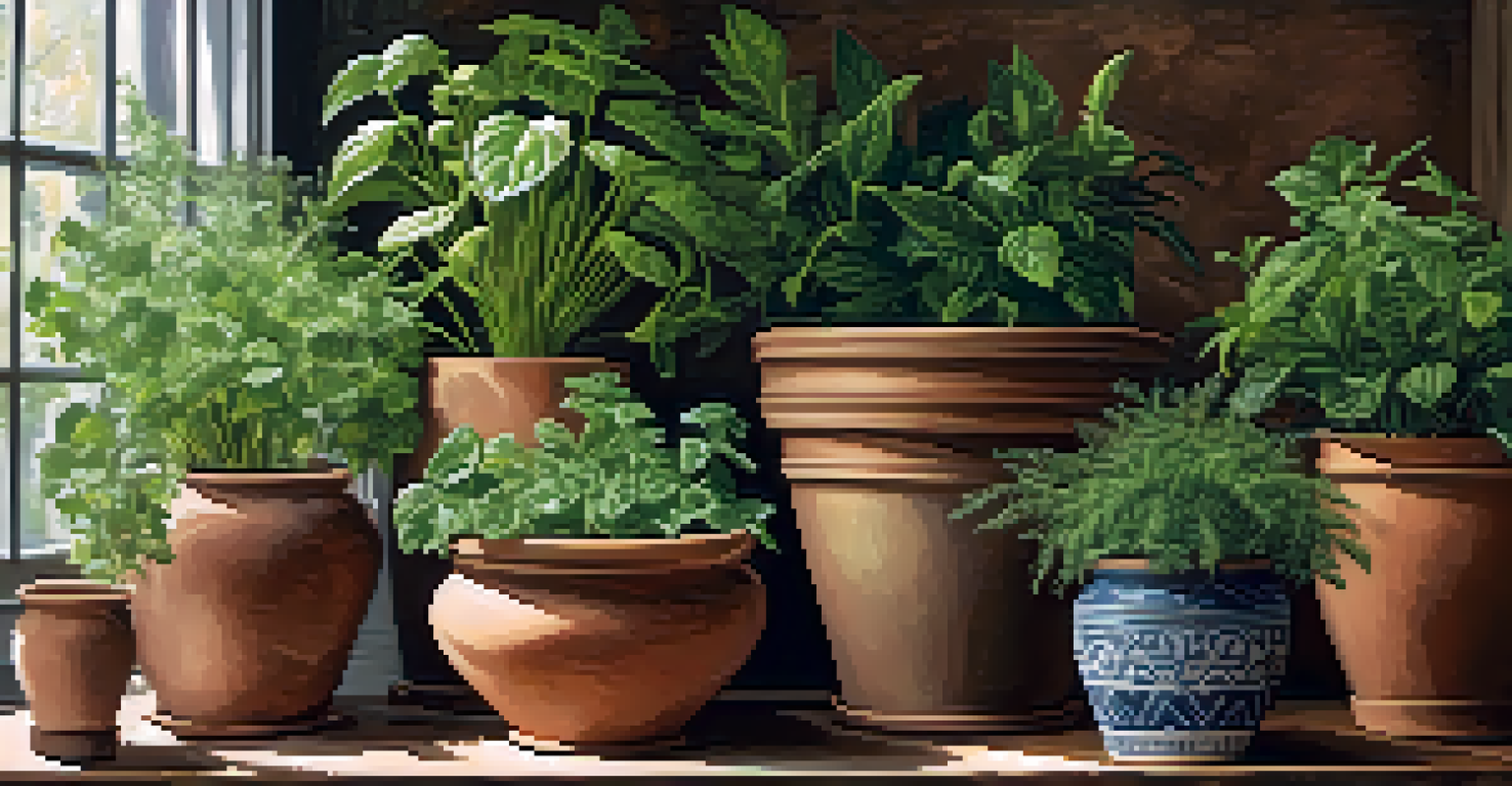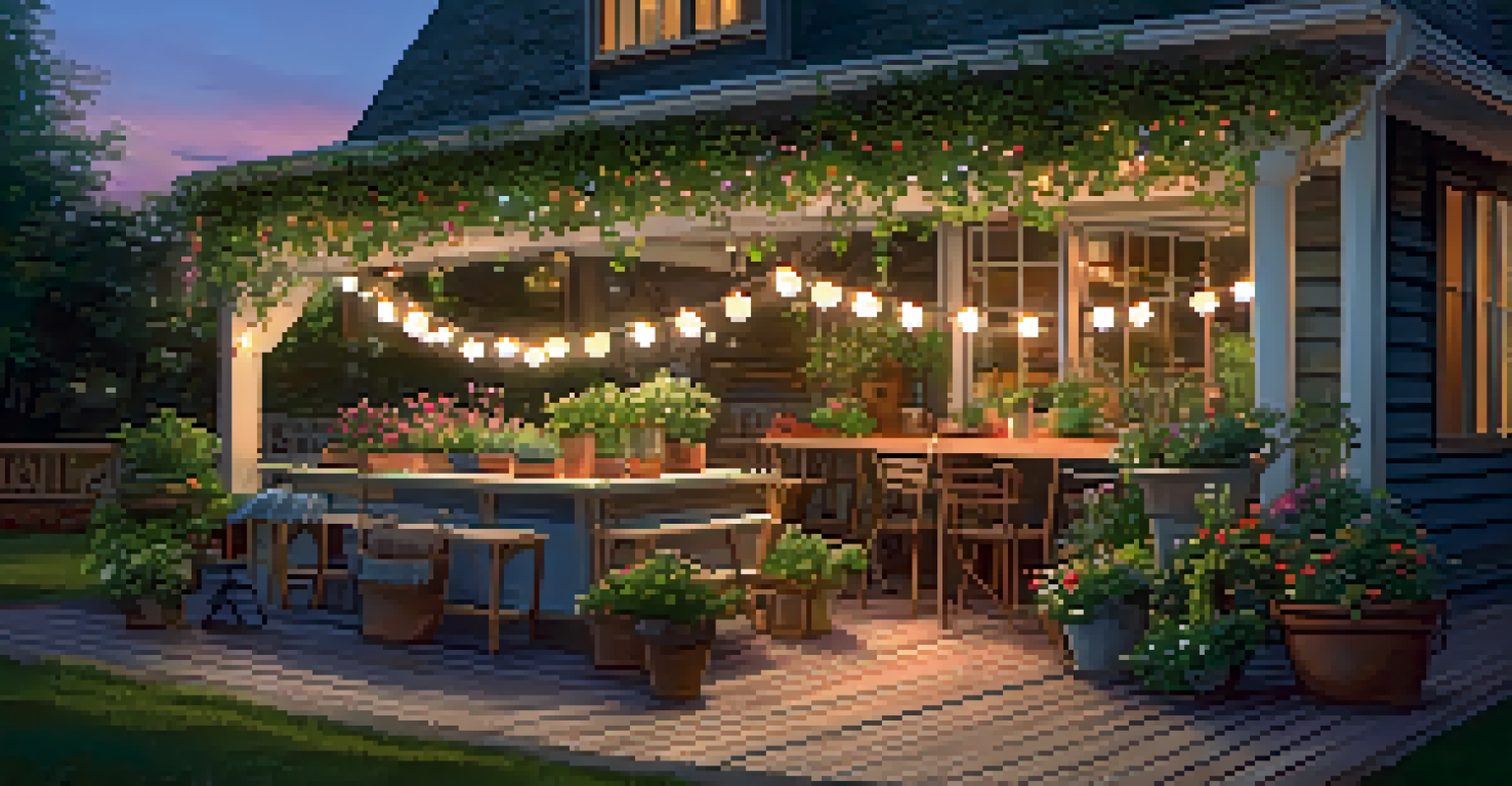Container Gardening: Grow Plants in Limited Spaces with Ease

Introduction to Container Gardening and Its Benefits
Container gardening is a fantastic way to bring greenery into your life, especially if space is limited. Whether you live in a tiny apartment or have a small balcony, you can enjoy growing your own plants with ease. This method allows you to cultivate a variety of plants, from flowers to vegetables, without the need for a large garden.
Gardening is a way of showing that you believe in tomorrow.
One of the biggest advantages of container gardening is its flexibility. You can move pots around to find the perfect sunlight exposure or create a seasonal display that changes with the weather. Plus, it’s an accessible option for those with mobility issues, as you can design your garden at a comfortable height.
Container gardening also encourages creativity. From choosing unique pots to experimenting with plant combinations, the possibilities are endless. It’s a wonderful way to express your personal style while enjoying the therapeutic benefits of gardening.
Choosing the Right Containers for Your Plants
Selecting the right container is crucial for successful gardening. Containers come in various materials such as ceramic, plastic, and metal, each with its own benefits. For instance, ceramic pots are attractive but can be heavy, while plastic pots are lightweight and versatile.

When choosing a container, consider the size and drainage. A pot that is too small can restrict root growth, while proper drainage holes are essential to prevent overwatering. Always select a container that is at least 6-12 inches deep for most plants to thrive.
Container Gardening is Flexible
This method allows you to easily move plants to find the best sunlight and adapt your garden to your space.
Don’t forget about aesthetics! Your chosen containers should complement your space and reflect your personality. Whether you prefer a rustic look or modern designs, the right containers can enhance your home ambiance while showcasing your plants beautifully.
Selecting Plants That Thrive in Containers
Not all plants are suitable for container gardening, so it's vital to choose wisely. Look for varieties that are known to perform well in pots, such as herbs, succulents, and dwarf varieties of flowers or vegetables. These plants tend to have root systems that adapt better to confined spaces.
In every gardener, there is a child who believes in The Seed Fairy.
Consider the amount of sunlight your chosen plants need. Some may thrive in full sun, while others prefer partial shade. Understanding your plants' light requirements will help you position your containers effectively, ensuring that they receive the right amount of sunlight for optimal growth.
Additionally, think about the growth habits of the plants. Trailing or climbing plants can add visual interest when cascading over the sides of containers, while upright plants can create a beautiful focal point in your garden. Mixing different types can create a lush and dynamic display.
Soil Choices for Healthy Container Gardening
The right soil mix is essential for container gardening success. Unlike traditional gardening, containers require a lightweight, well-draining soil that retains moisture without becoming soggy. Look for potting mixes specifically formulated for container plants, which often include peat moss, vermiculite, or perlite.
Incorporating organic matter, like compost, into your soil mix can further enhance plant health. Compost provides essential nutrients and improves soil structure, allowing for better water retention and aeration. It’s a simple way to give your plants the nourishment they need to flourish.
Choosing the Right Soil Matters
Using a lightweight, well-draining soil mix is essential for healthy growth in container gardening.
Remember to refresh the soil every couple of years. Over time, nutrients can deplete, leading to poor plant performance. By replacing the top layer of soil or repotting your plants into fresh mix, you ensure they continue to thrive in their container environment.
Watering Techniques for Container Plants
Watering container plants requires a different approach compared to garden beds. Containers can dry out quickly, especially in warm weather, so it's essential to check the soil moisture regularly. A good rule of thumb is to water when the top inch of soil feels dry to the touch.
Consider deep watering techniques to encourage strong root growth. Instead of shallow, frequent watering, aim to water thoroughly until it drains from the bottom. This practice not only hydrates the plant but also promotes deeper root systems that can support healthier growth.
Using self-watering containers can also be a game-changer. These containers have a reservoir at the bottom that allows plants to absorb water as needed, reducing the frequency of watering. They are particularly helpful for busy gardeners or those who travel often.
Fertilizing Container Plants for Optimal Growth
Fertilizing is crucial in container gardening since nutrients can wash away quickly due to regular watering. A balanced, slow-release fertilizer can provide consistent nutrition throughout the growing season. Always follow the package instructions to avoid over-fertilizing, which can harm your plants.
Organic options, like fish emulsion or seaweed extract, can also be beneficial. These natural fertilizers not only nourish your plants but also improve soil health over time. Incorporating organic matter during planting can further enhance nutrient availability, promoting vibrant growth.
Watering Requires Special Care
Regularly check soil moisture and consider deep watering techniques to support strong root systems in container plants.
Regularly assess your plants for signs of nutrient deficiency, like yellowing leaves or stunted growth. Adjust your fertilization schedule accordingly to keep your plants healthy and thriving. Remember, healthy plants are more resilient to pests and diseases.
Common Challenges in Container Gardening and Solutions
Like any gardening method, container gardening comes with its own set of challenges. One common issue is pest infestations, which can be more pronounced in smaller spaces. To combat this, regularly inspect your plants and use natural pest deterrents, like neem oil, to keep them at bay.
Overwatering can also be a problem, especially for novice gardeners. Always ensure your containers have adequate drainage and adjust your watering routine based on the weather. If you notice yellowing leaves, it may be a sign of overwatering, prompting you to reduce watering frequency.

Finally, seasonal changes can affect container gardens. Be prepared to move your plants indoors during harsh weather or insulate them against frost. With a little foresight and care, you can navigate these challenges and enjoy a flourishing container garden all year round.